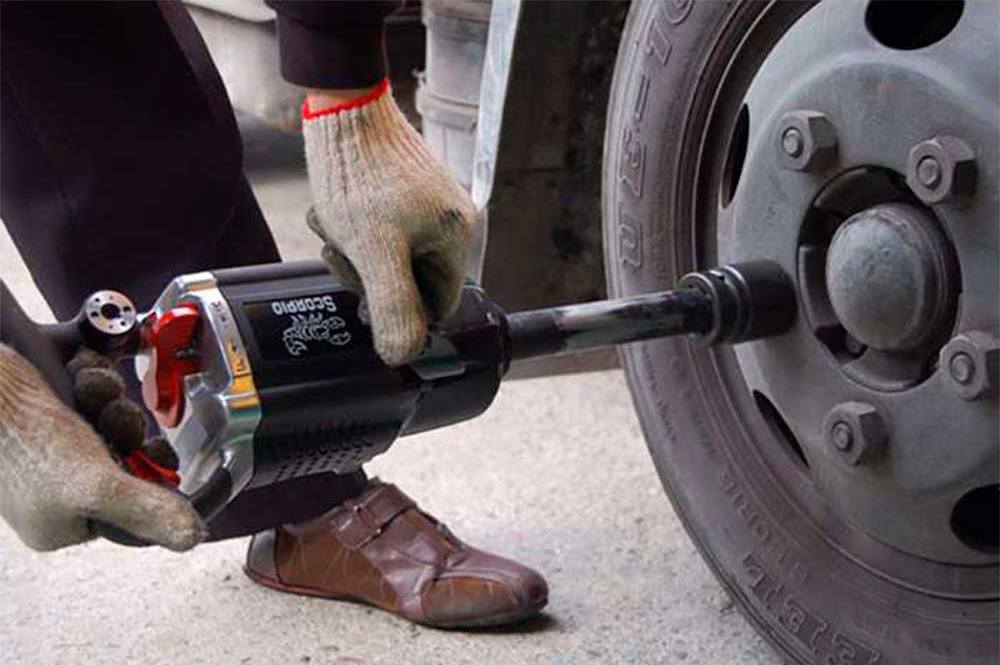Rating of the best socket heads for 2025

The end head is a replaceable working tool of a prefabricated assembly and metalwork tool for attaching/disconnecting threaded contacts by unscrewing/tightening nuts, bolts and other fixing devices with a certain type of head. Compared to a wrench, the head is not considered an independent tool, but is a working attachment that is used in conjunction with ratchets, wrenches, extensions, various pneumatic tools, in general, with everything that is designed to ensure proper positioning of the head in a fixing product and create the necessary working force .

Content [Hide]
- 1 Types of socket heads and their classification
- 2 The use of mechanical tools in conjunction with socket heads
- 3 Connecting square (socket)
- 4 Used markings
- 5 Benefits of using sockets
- 6 Difficulties of choice
- 7 A small overview of manufacturers
- 8 Rating of the best socket heads for 2025
- 9 Instead of an epilogue
Types of socket heads and their classification
By itself, their design is quite simple and looks like a cylindrical part made of steel (or alloy), in which one end is designed for work, and the second is for attaching to a fastening tool. On the side of the working part there is a recess of a certain shape, which is designed to capture the head of the fixing element. On the opposite side there is a socket (connecting square of the internal profile), in which the corresponding external element of the tool (adapter, knob, etc.) is fixed. There are also heads with a special design, the types of which will be discussed below.
The devices under consideration may differ in dimensions and type of the working profile, the size of the profile for connection, the recess in the working part, the possibility of being used together with special tools (for example, wrenches), as well as the scope.
As a rule, they can be performed with several work profiles:
- Hexagonal profile - is a classic head that can only be used with fixing devices with six edges. Such a profile is able to provide a reliable grip of fasteners (because it has a larger contact area), as well as to carry out a full and careful transfer of working force to it. However, the placement and use of such a head in a limited space will be difficult due to the fact that in order to rearrange the wrench (or other device), it will be necessary to rotate the tool by at least 60 degrees. Here you can additionally connect a ratchet or simply use a twelve-sided fixture.
- Dodecahedral profile - is an improved model and has 12 faces. It can be used with dodecagonal and hexagonal heads. Great for working in tight spaces, which is provided by a small angle of rotation for rearranging the wrench - only 30 degrees. However, it is worth noting that the 12-faced head does not provide a secure fixation with the head of the fixing device, which increases the risk of deformation up to the complete smoothing of the edges of the fastener. This property will decrease with an increase in the size of the profile and when it reaches 20 millimeters, it almost does not occur.
- TORX profile is a specialized Eurostandard profile with 6 special beams and can only be used for screws and bolts using a similar shape.
- SL profile - this hexagonal profile is characterized by versatility and is slightly similar to the previous version. However, heads of this shape are suitable for working with fasteners made in both inch and metric systems.At the same time, they can work with bolts and nuts, in which the ribs or edges turned out to be smoothed or deformed. Despite their versatility, SL sockets must be carefully sized, otherwise there is a high risk of deformation of the fastening tool.
- 12-sided universal profiles (SuperTech and Spline) - they can have straight or rounded edges that alternate with each other and are arranged in a special order. They can be used with six- or twelve-sided fixing tools made in metric or inch standard. In addition, some samples allow the use of both three- and four-sided retainer, as well as models of the TORX standard. Due to their versatility, they are not in every case able to provide tight contact with the mounting head and require the selection of dimensions with maximum accuracy.
Regardless of the profile type, the devices under consideration are divided into two groups according to the working part:
- Classic - with a depth of 25 to 38 millimeters;
- Elongated (i.e. with a greater height) - with a depth of 50 or more millimeters.
Classification by design and application
Among other things, socket heads are further subdivided according to their design features and type of application:
- Standard - are elongated or more conventional fixtures that can be used with any type of fasteners: wrenches, ratchets, pneumatic tools. Standard, in turn, are divided into impact (work with electric or pneumatic wrenches) and conventional (intended for installation in a manual tool).These samples have a classic square shape for a profile connection, and the surface is coated with a chrome composition. Impact samples on top (in the part of the connecting element) have a through hole for the pin, through which this equipment is properly fixed on the tool spindle. The impact models are black coated for reliable identification.
- With a universal joint - these models have a joint that is responsible for transmitting torque from a rotary tool at an angle. It is also an excellent solution when working in tight spaces.
- Candlestick - these specialized samples have an increased length (at least 65 millimeters) and their working profile is marked 12.16 and 21, which is the best suited for dismantling spark plugs in a car. Usually, their connecting size is 0.5 or 3/8 inches. They can be equipped with a magnet or a rubber insert, which ensures easy removal of candles from the well.
- Crow's Paw is another member of a specialized group with an open profile. At their core, they are open-end wrenches with a standard square, hexagonal or twelve-sided special profile and they can be used with knobs or ratchets for these sizes.
- Cut-out heads - there is a special cutout at the end of these models, which makes it possible to carry out operations with parts that have wires, contracts, and various tubes in the upper part.
- Through - a special type of heads for operations with nuts on studs and others with similar fasteners. They additionally have an external connecting special profile for special models of ratchets, wrenches or wrenches.
- With a drop-down ring - a special device in which the working part is located in a drop-down ring. Ideal for applications where space is limited or where a standard head cannot be used.
IMPORTANT! The section above only covers the most common head types, but there are actually many more. However, we are talking about extremely specialized models used in precision machine production or in laboratory conditions, which is why they are not found in the practical life of the master.
The use of mechanical tools in conjunction with socket heads
Nutrunners currently available are most often equipped with a switch for the direction of rotation of the shaft and a torque regulator. Thus, using the pressure settings at the head inlet, it is possible to control the tightening torque. In most models of pneumatic tools, the air pressure is set at 6.3 atmospheres at an air flow rate of 500 to 1200 liters per minute. However, when calculating the air flow, measurements should be carried out in different ways, taking into account the following indicators:
- The indicator of the amount of air that passes through the pneumatic tool in one minute when the start is pressed;
- Indicator of the number of technical pauses (to avoid overheating).
Also, when preparing a pneumatic tool for work, it is worth deciding on the required dimensions of the spindle hole and the thread for connection. The latter is measured in either the metric or inch system. Different sizes of the spindle square can create some difficulties with the proper selection of socket heads, this situation is especially typical for Russian devices.For foreign pneumatic tools, such a problem occurs infrequently, because their devices, for the most part, are clearly unified and standardized for the available sizes.
Separately, it is worth mentioning impact head samples for nut winders - they can be elongated and have a standard size. Their distinctive feature is the presence of recesses on the inner faces, which allows you to evenly distribute the applied working force. The number of faces varies from four to twelve. In addition, impact models are made of high-strength materials - either chrome vanadium or chromium molybdenum. The first is somewhat less durable.
Connecting square (socket)
This is the name of the size of the square hole on the back of the head. It is with the help of this part that the end head is installed in the knobs, ratchets, extension cords, or in pneumatic and electric tools. In total, there are five types of standard landing square sizes, which are marked in the inch system. Regardless of which system is used on the head or fastening tool, all sizes are graduated as follows:
- 25.4 millimeters = 1 inch;
- 19.05, millimeters = ¾ inch;
- 12.7 millimeters = ½ inch;
- 9.53 mm = 3/8 inch;
- 6.35 millimeters = ¼ inch.
Used markings
Various abbreviations and abbreviations are used by manufacturers to specify the properties of a particular sample of fitter's and assembly tools. Thus, looking at a set of numbers and letters, it is possible to quickly select the desired model, according to its technical characteristics. In particular, for socket heads, the following parameters are indicated:
- Model size;
- Landing square (socket) option;
- profile data;
- Required planting depth;
- Applied type of alloy;
- Manufacturer's name.
It is worth paying close attention to the fact that the size of the model will be indicated for the country for which the tool is made, i.e. in inches or metric. At the same time, even if there is a table for converting sizes from one system to another, they will never completely match. Thus, for heads made in the inch system, it is preferable to use a toolkit that is also prepared for work items with the inch system. Accordingly, a similar rule will apply to metric instruments.
Benefits of using sockets
Some of the features of the devices under consideration include:
- Savings - the availability of sets with heads will allow you to quickly and accurately unscrew / screw any nut, while having many different types of screwdrivers is not required;
- Versatility - you can use a set with heads in different areas - from repairing household appliances to professional car maintenance;
- Efficiency - thanks to a set of heads of various types, you do not have to look for the right tool for a long time or contact the master - most of the work can be done independently;
- Ease of storage and transportation - as a rule, any described set comes in a convenient case in which it is convenient to carry and store repair products. In it, usually, all the elements are sorted by size and have the appropriate gradation, so finding the right model is not difficult.
Difficulties of choice
As a rule, the devices in question are rarely purchased in a single copy - it is much easier to buy the right set right away and not to suffer in the future with the search for the right products.As soon as you need to make the right choice, then first of all you need to pay attention to the following points:
- The complete set of the set and the breadth of its use - for single works of a domestic nature, an inexpensive set is suitable, where the head fixtures are present in their most common and classic variations, and are made to fit the traditional dimensions of the landing square. Together with the main elements, the set can include a ratchet, various extensions and knobs, as well as a hinged pencil. These are already more complex sets, they are delivered in rather rather big cases and are used for works of a more complex kind;
- Separately, it is worth paying attention to the material from which the purchased devices are made. Their service life will fully depend on the quality of the material. The most durable end models are made of chrome vanadium steel. In addition to excellent strength properties, they do not have a large mass, which is very convenient for manual work and "on weight". Also, samples with a galvanized coating are in great demand, which is a good guarantee against the occurrence of traces of corrosion. Nevertheless, even inexpensive models made of soft metals are able to cope with the tasks set quite well, however, their service life will not be very long;
- Size - more important for highly specialized craftsmen who are constantly dealing with the repair of household appliances from various manufacturers, where various nut, screw and other fasteners are used. For this kind of work, the presence in the set of an extended range of models will greatly simplify the assembly / disassembly operations.
A small overview of manufacturers
To be honest, it is almost impossible to determine a clear leader in this matter. For different groups of potential buyers, there are their own criteria - for some, quality is important and price is of little importance, for others, low cost and not so high quality are important, because the estimated scope of work is not very large-scale. However, most foreign brands can be confidently distinguished:
- "Jonsway";
- "Gross";
- "Sparat";
- "Matrix";
- "Force";
- Miol.
The products of these companies are distinguished by relatively high quality at a fairly reasonable price.
Rating of the best socket heads for 2025
Budget segment
3rd place: "Delo Tekhnika 660019"
votes 0
This model is impact and is intended specifically for use in conjunction with a wrench. The main area of application is automotive and locksmith workshops, construction industries and for solving some household tasks. The seat square is set to 0.5 inch under the hex socket. Made of durable material, has a budget price. Country - manufacturer - Russia, product weight - 120 grams. The recommended retail price is 150 rubles.

- Budget price;
- Light weight;
- Extended range of tasks to be solved.
- Relatively short service life.
2nd place: "Delo Tekhnika 660213"
votes 0
Another representative of the shock series, which has an elongated base. It can be used in both manual and pneumatic wrenches. More aimed at industrial use, as evidenced by its elongated shape. The landing socket is set to 0.5 inches and the weight of the part is 150 grams. The material of manufacture is chrome-molybdenum, which indicates sufficient strength.The recommended cost for retail chains is 200 rubles. Country of origin - Russia.

- Good chrome-molybdenum base;
- Sufficient weight;
- Ability to work with any tool.
- Narrow specialization.
1st place: "Delo Tekhnika 660224"
votes 0
Powerful impact model based on hexagonal contact, can work with both manual and automatic tools. Due to its power, it is used more for production purposes - construction and auto repair. At the same time, it is able to unscrew nuts from long studs. The base material is chrome-molybdenum. The country of origin is Russia, the mass of the device is 340 grams. The recommended retail price is 320 rubles.

- Relatively strong body;
- The variability of the tools used;
- Ability to work in tight spaces.
- Not detected.
Middle price segment
3rd place: "JTC 448210"
votes 0
This model is high and shock, is compact and is specially focused on the dismantling of various fasteners that connect the structural parts of trucks and cars. It can be used on machines and mechanisms employed in agriculture or engineering. Can be used with a 0.5 inch wrench or wrench at 10 millimeters. The base material of manufacture is chromium-molybdenum steel. The country of origin is Taiwan, the weight of the device is 120 grams. The recommended store price is 470 rubles.

- Ability to work with automatic / manual tools;
- Various areas of use;
- Light weight.
- Not found.
2nd place: "JTC 448310"
votes 0
A good example of a hex head impact type. The manufacturer positions the device as a multi-tool - it can be used both at home and at work. The material of manufacture is chrome-molybdenum steel, while the weight is only 110 grams. The country of origin is Taiwan, the recommended cost for stores is 570 rubles.

- multitasking;
- Ease of use;
- Lightweight weight.
- Not detected.
1st place: "JTC 65230"
votes 0
This sample does not belong to the group of percussion devices, but is able to easily cope with any tasks from any industry. Used with a wrench or a ¾ inch wrench at 10 millimeters. The long service life is due to the production of a product from a durable chrome-vanadium alloy. It has a relatively large mass, which is not a disadvantage for standard models, only 280 grams. The country of origin is Taiwan, the recommended retail price is 780 rubles.

- Heavy-duty manufacturing material;
- Heavy weight adds stability;
- Versatility.
- Not installed.
Premium class
3rd place: "AV Steel AV-740095"
votes 0
A highly specialized model designed to work with large nuts only on an industrial scale. Designed for dismantling/mounting threaded connections. It is used exclusively with mechanical drives and large extensions, or special adapter adapters are used. Production material - chromium-molybdenum steel. The landing size is 1 inch with a size of 95 millimeters. Weight is 4.5 kilograms, the country of origin is Taiwan.The cost is 3300 rubles.

- The ability to use adapters and adapters;
- Quality alloy workmanship;
- Big landing.
- Too much weight.
2nd place: "NORGAU 063803060"
votes 0
Another representative of a highly specialized direction. The landing square is spring loaded for easy installation and operation. Production material - chrome-vanadium alloy. The hitch method is dodecahedral unstressed. The size of the landing square is ¾ inch at 75 millimeters. The total weight of the fixture is 1.1 kilograms, the country of origin is Russia. The recommended cost is 3500 rubles.

- Spring loaded socket;
- Durable alloy workmanship;
- Extended operational resource.
- High price.
1st place: FORCE 48565
votes 0
This model has extended dimensions, which are 1 inch for a landing square with a total size of 65 millimeters. The material of manufacture is chrome-vanadium steel, which means a long service life of the fixture. The shape of the tip is a standard hexagon. The sample can work not only with tools of its size, but can also be adapted to other dimensions by means of extensions. The total weight of the part is 1.1 kilograms, the country of manufacture is Taiwan. The recommended retail price is 3600 rubles.

- Ease of construction and operation;
- Adaptation to various instruments;
- High strength manufacturing material.
- Not found.
Instead of an epilogue
The analysis of the market of the products under consideration found that the budget segment is fully occupied by the Russian manufacturer.Despite the fact that the prices in this segment are much more than adequate, however, products from it cannot boast of special quality. This circumstance is due to the fact that they most often use a chromium-molybdenum base, which is not particularly durable. As for the middle segment, it belongs to an Asian manufacturer and is able to show the proper level of value for money. The most unclaimed is the premium class, in which most of the models presented are considered too highly specialized and extremely overpriced.
new entries
Categories
Useful
Popular Articles
-

Top ranking of the best and cheapest scooters up to 50cc in 2025
Views: 131654 -

Rating of the best soundproofing materials for an apartment in 2025
Views: 127695 -

Rating of cheap analogues of expensive medicines for flu and colds for 2025
Views: 124522 -

The best men's sneakers in 2025
Views: 124039 -

The Best Complex Vitamins in 2025
Views: 121943 -

Top ranking of the best smartwatches 2025 - price-quality ratio
Views: 114982 -

The best paint for gray hair - top rating 2025
Views: 113399 -

Ranking of the best wood paints for interior work in 2025
Views: 110321 -

Rating of the best spinning reels in 2025
Views: 105332 -

Ranking of the best sex dolls for men for 2025
Views: 104370 -

Ranking of the best action cameras from China in 2025
Views: 102220 -

The most effective calcium preparations for adults and children in 2025
Views: 102014









